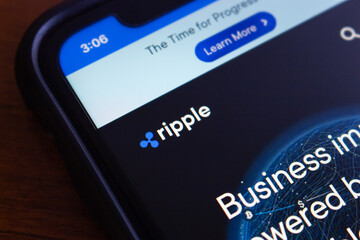The world of cryptocurrency continues to evolve at a rapid pace, introducing new technologies and standards that reshape the landscape of digital finance. Among these advancements is the recent launch of the Multi-Purpose Token (MPT) standard on the XRP Ledger (XRPL), a move poised to significantly enhance Ripple’s position in institutional finance. This key development is designed to simplify the tokenization process of Real-World Assets (RWAs) and ensure built-in compliance, potentially making XRPL the preferred network for secure, high-volume institutional transactions.
Ripple’s XRPL MPT Standard: Revolutionizing Institutional Finance
Understanding the XRP Ledger MPT Standard
Dr. Martin Hiesboeck, Head of Research at Uphold, recently announced the activation of the MPT standard on XRPL’s mainnet. This innovative token is a protocol-native fungible token created to streamline on-chain issuance of RWAs and institutional-grade financial instruments. Unlike conventional token standards, which often require complex smart contract customization, the MPT standard integrates essential control features directly into the XRPL protocol. This integration reduces risks associated with smart contract complexities, offering a robust and secure foundation for regulated financial institutions.
Key compliance features embedded within MPT tokens include “granular asset freezing” and “fund clawback” mechanisms. These functionalities enable issuers to respond swiftly to sanctions, fraud, or operational errors. Additionally, MPT tokens incorporate advanced access controls via Decentralized Identifiers (DIDs) and credentials, ensuring that only authorized, KYC-verified participants can hold and transfer assets. By embedding these capabilities at the protocol level, the MPT standard minimizes high-cost coding, audits, and regulatory capital requirements, ultimately reducing operational risks and accelerating adoption.
When it comes to regulated settlements, the MPT standard is engineered for high-throughput financial operations, leveraging XRPL’s strengths of rapid transaction speeds (3-5 seconds) and low, predictable fees in XRP. This approach ensures transparency, as the protocol automatically burns tokens returned to the issuer, maintaining an auditable circulating supply.
Furthermore, MPT supports native metadata standards such as XLS-0089d and the Actus Standard, allowing tokens to function as digital contracts with machine-readable terms. This smooth integration with external financial risk and valuation systems positions MPT as a comprehensive digital contract, fostering a conducive environment for institutional adoption.
Impacts on XRP’s Utility and Investment Potential
The adoption of MPT and the broader tokenization of RWAs—an emerging market projected to reach trillions of dollars—will have significant implications for XRP’s utility and value. Each MPT issuance, transfer, or management operation necessitates a fee paid in XRP that is permanently burned, creating a deflationary effect that could drive long-term upward pressure on XRP prices as institutional trading increases.
Further contributing to XRP’s scarcity, each new MPT issuance mandates a fixed XRP reserve, thus reducing the circulating supply and establishing a verifiable link between ledger activity and cryptocurrency demand. This utility-driven approach transitions XRP’s role from a speculative asset to an essential utility layer underpinning global financial activity.
How does the MPT standard enhance institutional finance?
The MPT standard provides a secure and efficient framework for the tokenization of real-world assets, embedding essential compliance features directly into the XRPL protocol. This reduces the complexities and risks associated with smart contract development, making it an attractive option for regulated institutions engaged in high-volume financial operations.
What are the compliance features of MPT tokens?
MPT tokens offer critical compliance functionalities, including “granular asset freezing” and “fund clawback” mechanisms. These features enable issuers to rapidly address sanctions, fraud, and operational errors. Moreover, advanced access control via DIDs ensures that only KYC-verified participants can manage these assets.
How does the MPT standard affect XRP’s economic dynamics?
The widespread use of MPT tokens, which require transaction fees paid in XRP that are subsequently burned, introduces a deflationary mechanism, potentially increasing XRP’s value. Additionally, each MPT issuance demands a fixed XRP reserve, further reducing the circulating supply and establishing a strong link between XRP demand and ledger activity.
In conclusion, this comprehensive guide to Ripple’s XRPL MPT Standard delves into its technological advancements, regulatory benefits, and implications for XRP’s market positioning, helping investors and stakeholders make well-informed decisions in the rapidly evolving world of digital finance.

